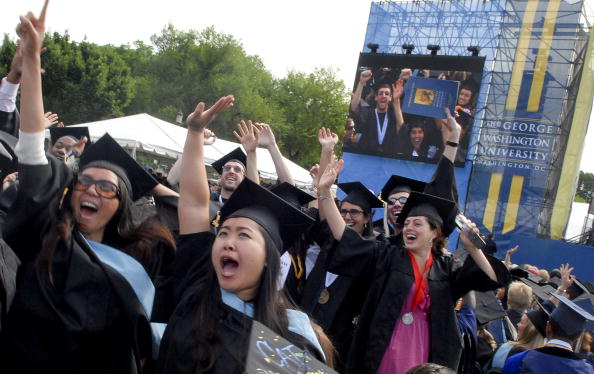A suspected mass arsonist was arrested in Los Angeles this week by Iranian-American immigrant Shervin Lalezary, who was serving as a reservist for the sheriff’s department. Early news reports incorrectly stated the suspect, German national Harry Burkhart, had an angry outburst in an immigration courtroom as his mother faced deportation.
But while both hero and suspect in this case are foreign-born, much was made of Burkhart’s status as a foreign national, while little mention was made of Lalezary’s story, writes our sister blog Multi-American.

As an immigration reporter who has been covering the increase in deportations and divided families, the notion that the son of a potential deportee might have snapped grabbed my attention, as it did that of other reporters. Later on, when it became clear that the elder Burkhart had appeared not in immigration court, but in federal court related to fraud charges in Germany -and that her arrest might have prompted her son’s anger – it became a matter of setting the record straight.
Perhaps most importantly, as typically happens in stories like these, reporting on the suspect took priority. That said, the point made is good food for thought.
Read more at: multiamerican.scpr.org

nasa hq photo / Flickr
Members of the NSO performing at the Kennedy Center.
What: The National Symphony Orchestra plays throughout Columbia Heights as part of “NSO In Your Neighborhood.”
When and where: Concerts began Wednesday and will continue through Monday at various locations in Columbia Heights. Check the National Symphony Orchestra’s schedule for exact dates, times and locations.
Cost: All show are free, but some do require advance registration.
Why you should go: The musical stylings of the NSO are typically relegated to expensive venues such as the Kennedy Center. These yearly neighborhood performances are intended to bring classical music back to the masses and increase accessibility to those living in D.C.’s diverse neighborhoods.
Other events to consider: A panel discussion and film screening of “The MLK Streets Project,” which follows eight D.C. teens as they travel around the country to see the state of streets named after Martin Luther King, Jr. The film explores the racial, historical and economic state of America through these streets. The event begins at 5:30 p.m., Monday at the Woolly Mammoth Theatre Company (641 D St. NW). Tickets cost $15 to $20.
The Associated Press’ Ben Nuckols gives us this worthwhile read on D.C.’s political landscape ahead of Ward 8 Councilman Marion Barry’s re-election bid. There are a few notable mentions of the role race plays in D.C. politics, such as Council Chairman Kwame Brown saying, “everyone wants to automatically – because I’m young and black – assume that I’m just Marion Barry.” Barry also gives his thoughts on his white critics who can’t unseat him. Whites only make up about 3 percent of his ward.

“I have more white support than people say I do, but I don’t worry about that,” Barry said, referring to his ward. “That’s what frustrates some of these white people out here. They get frustrated, all worked up. They can’t do a damn thing to me or about me. Isn’t that funny?”
Read more at: www.huffingtonpost.com
Cooking on a budget is becoming more difficult, even if you’re not buying organic. The cost for food typically considered “budget items” increased at a higher rate than consumer goods in 2011. Prices rose by 10 percent or more for milk, oil, lean ground beef and potatoes, NPR’s The Salt reports.
It’s challenging enough trying to eat healthy on a budget, particularly if you don’t have a stove for cooking. These continued price increases will hit low-income families the hardest since they spend a greater share of their income on food; 40 percent of D.C. households with children have reported not having enough money to buy food.

Cooking at home is still much cheaper than eating out, but the higher costs still sting, particularly when the items with the biggest price increases are the budget picks for lean times. Ground beef prices rose 10 percent, and pork prices were almost 7 percent above a year ago. Eggs were up 10 percent. That’s according to the USDA’s final projection for food costs in 2011, and its projections for 2012.
Read more at: www.npr.org

Kris Connor / Getty Images
Students wave to video cameras during the 2010 George Washington University commencement on the National Mall.
Your chances of getting a job depend greatly on your major. A Georgetown University study released Wednesday shows that unemployment rates among college graduates are highest for those who majored in architecture, arts and the liberal arts.
Some want to address D.C.’s high unemployment by getting more District youth to go to college; unemployment is 26 percent in Ward 8, where half of adults stopped their schooling at high school. That’s the impetus behind a new D.C. proposal requiring all District high school students to take a college admission exam. But these unemployment figures show that simply getting a college degree won’t be enough to prevent you from being unemployed. There’s also a racial disparity: young black college graduates face double the unemployment rate than white college graduates.
Here are the recent college graduates with the highest unemployment rates:
Continue reading →
Looking to rent an apartment in D.C? It’ll cost you. Rents increased by 2.1 percent in D.C. over the course of the year, according to a new Delta Associates report.
There is some good news: rents didn’t increase as much as they did in 2010, when they rose by 7.8 percent. And some experts are predicting that such rent increases will soon stall; the D.C.-area is expected to get 23,000 new apartments before 2014, UrbanTurf reports.
Still, all of this isn’t really that comforting to someone looking for an affordable place to live now, particularly those who can’t afford to buy a place thanks to D.C.’s rising home prices.

Class A rents in the city in the fourth quarter averaged $2,579/month, up from $2,454 in December 2010. For Class B buildings, rents also increased, to $1,863/month from $1,808/month in the fourth quarter of 2010.
Read more at: dc.urbanturf.com
Most available jobs in the District require a minimum of a bachelor’s degree, which is one reason behind D.C.’s unemployment disparity; in Ward 8, where unemployment is more than 25 percent, about half of adults only hold a high school diploma.
One solution: get more D.C. students to go to college. D.C. Council Chairman Kwame Brown is proposing a bill that would make taking the SAT or ACT test a graduation requirement, The Washington Post reports. Details are a bit hazy at the moment, such as what kind of financial assistance will be given to students who can’t afford test fees. The impetus, it seems, is to create a different expectation for students who may not view college as an option.
Brown said it’s imperative that D.C. public schools, with a drop-out rate of 43 percent, standardize how students view post-secondary education. He noted that some charter schools already require students to prepare for the SAT or ACT and apply for college.
“I’m not saying everyone should go to college, but my goodness, we have to get more young folks prepared to go to college if they want to go to college,” Brown said in an interview. “A lot of them don’t even know how to prepare and apply to college.”
Read more at: www.washingtonpost.com

Patrick Feller / Flickr
Is D.C. becoming culturally irrelevant because artists can’t afford to live here?
Slate’s Matthew Yglesias wrote last week that D.C. is “unhip” because it’s too expensive to live here; Washington City Paper‘s Ryan Little disagreed, writing that the District has abundant opportunities for artists.
Now, Atlantic Cities’ Richard Florida weighs in on the debate by providing the numbers on wages and housing for D.C.-metro artists. Arts, entertainment and design workers in our region have an average of $2,465 left over each month after paying for housing, which is far less than similar workers in New York and Los Angeles. Florida writes:
When all is said and done, D.C. seems like a not-so-great place for visual artists, a slightly better than average place for musicians and a pretty good place for writers and editors. New York and L.A. continue to dominate these fields, particularly arts, design and music, and actually provide a comparatively good living even with their high costs of housing.
A number of you responded on Facebook and Twitter to our questions: Is D.C. “unhip?” Is it because the city is too expensive for artists?
Continue reading →
A number of states have raised their minimum wages with the start of the new year, rekindling a debate over whether such wage hikes reduce poverty or increase unemployment.
The federal minimum wage is $7.25. D.C.’s minimum wage is one of the highest in the nation, at $8.25 an hour. Only Vermont, Oregon and Washington have higher minimum wages.
Some pro-business groups and economists argue that high minimum wages discourage employers from hiring workers. Unemployment is high in D.C. neighborhoods that are home to many low-skilled workers, the kind of workers who typically take minimum wage jobs. Do you think lowering the minimum wage would get more people hired?

“I don’t think there’s any sensible economist who thinks you could double the minimum wage and not throw a lot of people out of work,” says David Neumark, director of the Center for Economics and Public Policy at University of California, Irvine. There is a debate, he says, over the effect of incremental raises for the small group of largely unskilled workers who earn the minimum wage.
“The consensus from a lot of studies I’ve surveyed — including my own — says that a 10 percent increase in the minimum reduces employment of those very low-skilled groups by about 1 to 2 percent,” he says.
Keep in mind, that’s 1 to 2 percent of the people earning minimum wage, and they make up only about 5 percent of the workforce nationally. So the job losses are pretty tiny.
Defenders of the minimum wage say it’s even less than that, pointing to a couple of recent studies that show zero net job loss. David Cooper, an analyst with the pro-labor Economic Policy Institute, says the minimum wage is especially necessary now.
“When you have lines of the unemployed around the corner looking for jobs, there’s no real pressure for employers to raise wages,” Cooper says.
Read more at: www.npr.org
The median age of the nation’s white population is rising, while it’s dropping for non-whites, according to census data. That’s left some concerned that blacks and Latinos are disproportionately affected by cuts to public programs that benefit youth.
D.C.’s demographic make-up is somewhat reverse of national trends; African Americans have the highest median age at 37.7 years. The median age for whites is 33 years and 29.8 years for Hispanics. This younger population is behind D.C.’s record growth.

“Where the old don’t see themselves reflected in the young, there’s less investment in the future,” says Manuel Pastor, a professor of geography and American Studies & Ethnicity at the University of Southern California where he directs the Program for Environmental and Regional Equity (PERE) and co-directs the Center for the Study of Immigrant Integration.
“Our racial divide has become a generational divide,” Pastor says. “There’s this image of an older generation drawing up the drawbridge just as the younger generation is coming of age in America.”
More important, data show that states with a larger gap between median ages of whites and people of color tend to make fewer investments in social programs that once benefited older generations that were predominantly white, according to a new research project by PERE in conjunction with PolicyLink, a national research and advocacy organization based in Oakland, Calif.
For instance, Pastor says states with significant age gaps between white and nonwhite populations tend to spend the least on education and public transportation.
Read more at: americaswire.org











